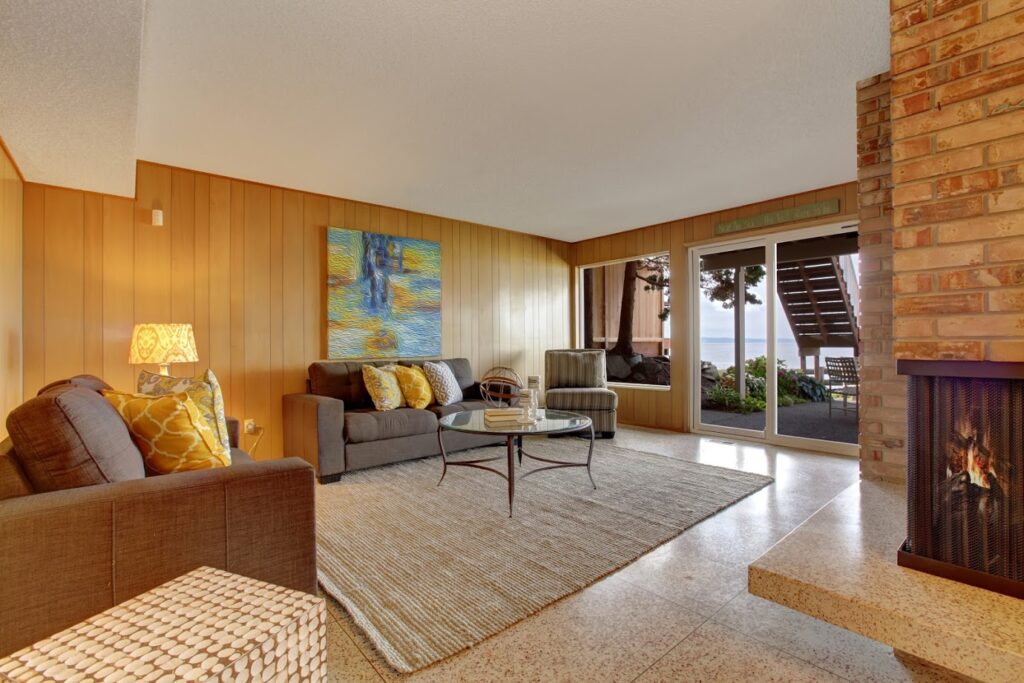
Color Options Besides White for Your Interior Trim
White is a classic color for interior trim. Most painters don’t use a true white but one of the shades they have at their disposal. White is good when you want to make wall colors pop or brighten them up. However, you do have options other than white, and in some cases, they might be the better option. Indeed, alternative colors can convey a unique, different look in your rooms.
Below are some color approaches that you can consider for your Pittsburgh trim paint colors.
Natural Stains
One purpose of trim is to show off woodworking craftsmanship. Therefore, most trim is made of wood or made to resemble wood. Wood offers another visual dimension because not only do you have the carving to make the trim, but also you have the material’s natural grain. So, one approach for your trim is to have it naturally stained rather than painted.
If your trim has previously been painted, you’ll have to ask the contractors to strip the paint off to the bare wood. You can have them do a test spot so you can see what the wood looks like. Typically, most wood will look nice enough to be stained.
Once they’ve stripped the paint away, you can choose the stain. If you want a grand look in your room, consider a dark, glossy stain. This style of trim will pop against light walls. A more natural stain will yield a gentler effect. You could use such a stain to add warmth to your room.
Neutral Colors
Neutrals come in a wide range of Pittsburgh trim paint colors. White is a true neutral, which is why it works so well in any color scheme, but you can choose from many other neutrals. They can range from a light warm beige to a light cool gray. They can also feature darker shades or those that are neutral in the warm-cool spectrum, such as taupe and greige.
Choosing a neutral shade for trim can be a little challenging. First, start with the wall color and where it falls on the warm-cool spectrum. If it’s strongly in one part of the spectrum, you want a neutral that also falls in that part of the spectrum. Taupe and greige would be good for colors that are more in the center of the spectrum.
Neutral painted trim is ideal if you want to call subtle attention to your trim. It’s also good if you like the transitional style of décor, which falls between modern and old-world. Neutral trim conveys an air of sophistication.
Bold Colors
Use bold colors when you want to create a sense of drama in your rooms. Bold colors include deep jewel tones such as emerald or sapphire. Black is also a bold choice. Interestingly, pastels Pittsburgh trim paint colors can also feel bold in your rooms. The color you choose depends on several factors.
Jewel tones work well if your room otherwise feels boring. If you don’t have a lot of color in the paint and furnishings, a jewel color will add visual interest to the room. You should plan to pull the color through a couple of other places in your décor so that it all matches, however.
Black is a stunning color for a sophisticated room. It works well in rooms with neutral walls. However, you can also use it to add depth to brightly colored walls. Black trim works equally well in modern and traditional interiors.
Pastel trim doesn’t have quite the same impact as jewel tones or black. However, if you have your trim painted an unexpected pastel color, such as lavender or mint green, you’ll create an eclectic look in your room. It can feel romantic or homey or even a touch edgy. Pastel trim can add a pop of color to plain walls, or you can choose a light complementary color to the wall paint.
If you’re ready to stray away from white walls, try one of the above approaches. When you’re ready for a professional paint job to update your Pittsburgh trim paint colors, call Fagan Painting LLC.
